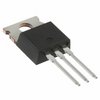-
The maximum safe operating area (SOA) of the STF40N20 is not explicitly stated in the datasheet, but it can be estimated based on the device's thermal characteristics and voltage ratings. As a general rule, it's recommended to operate the device within the specified voltage and current ratings to ensure reliable operation.
-
To ensure proper cooling, consider the device's thermal resistance (RthJA) and maximum junction temperature (Tj). Use a heat sink or thermal pad to reduce the thermal resistance, and ensure good airflow around the device. You can also use thermal simulation tools to estimate the device's temperature and optimize your design accordingly.
-
The recommended gate drive voltage for the STF40N20 is typically between 10V to 15V, depending on the specific application and switching frequency. However, it's essential to consult the datasheet and application notes for specific guidance on gate drive voltage and switching frequency to ensure reliable operation.
-
Yes, the STF40N20 is suitable for high-frequency switching applications up to several hundred kHz. However, it's crucial to consider the device's switching losses, gate charge, and parasitic capacitances to ensure reliable operation and minimize electromagnetic interference (EMI). Consult the datasheet and application notes for specific guidance on high-frequency operation.
-
To protect the STF40N20 from overvoltage and overcurrent conditions, consider using voltage clamping devices, such as TVS diodes or zener diodes, and current sensing resistors or fuses. You can also implement overvoltage and overcurrent protection circuits using dedicated ICs or microcontrollers. Consult the datasheet and application notes for specific guidance on protection circuits.
 STF40N20 datasheet
by STMicroelectronics
STF40N20 datasheet
by STMicroelectronics
Findchips
 STF40N20 datasheet
by STMicroelectronics
STF40N20 datasheet
by STMicroelectronics
 Findchips
Findchips